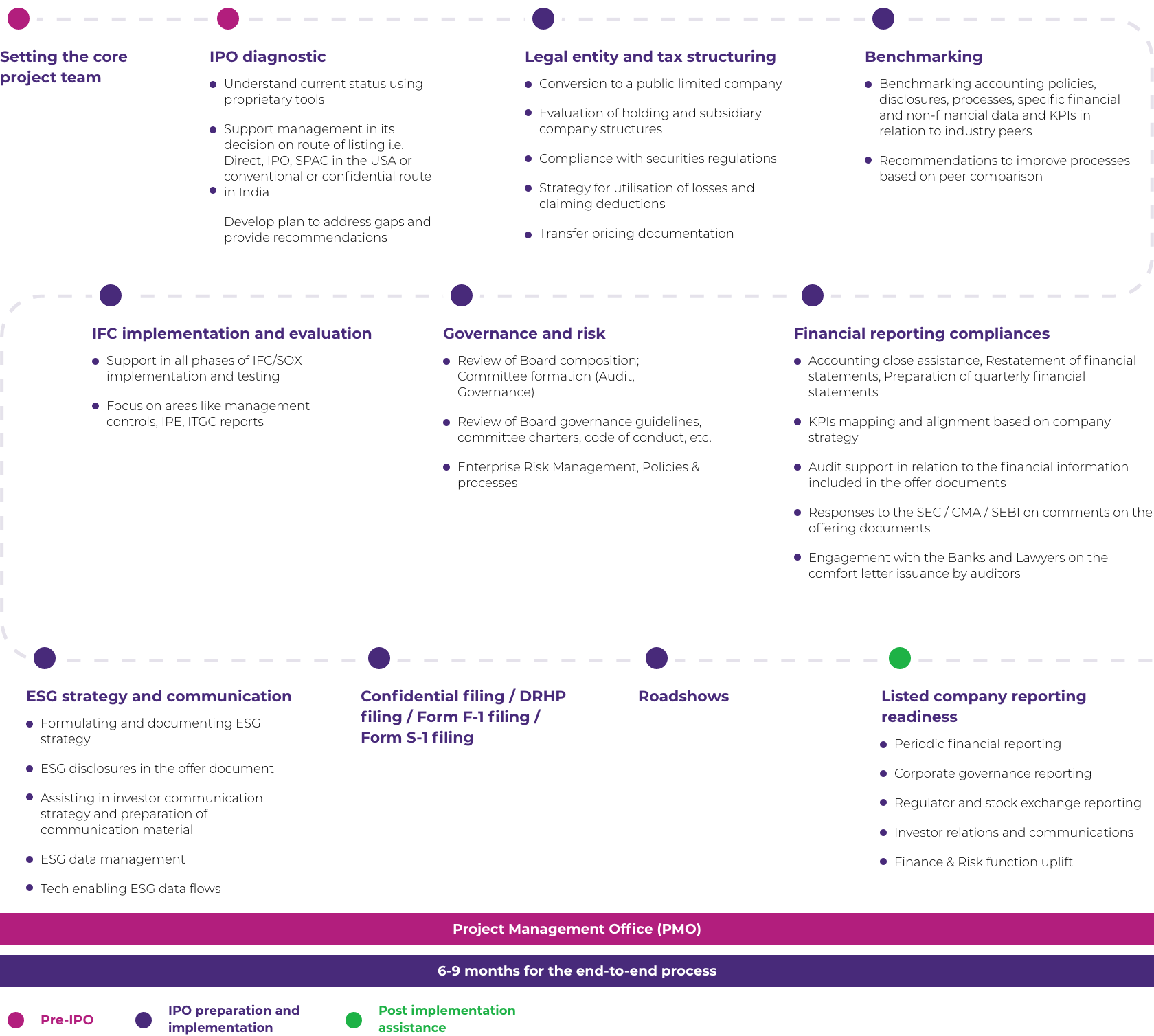US ECONOMIC LANDSCAPE
The U.S. macroeconomic environment in early 2025 was characterized by a notable deceleration in growth and a gradual moderation in inflation. Real GDP contracted by 0.3% (annualized) in Q1 2025, following a solid 2.4% expansion in Q4 2024, reflecting a slowdown in consumer spending and business investment.

Core inflation remained above the Federal Reserve’s 2% target, with the personal consumption expenditures (PCE) price index increasing by approximately 3.5% on an annualized basis in Q1.
However, inflation showed signs of easing, with the headline CPI trending down toward 2.6% by March 2025. Against this backdrop, the Federal Reserve maintained its policy rate at 4.25–4.50% during the March meeting, emphasizing a data-dependent and measured stance to balance inflation control with economic stability.
U.S. equity markets demonstrated resilience despite rising global uncertainties and mixed macro signals.
The S&P 500 recorded substantial gains through late 2024, ending the year up approximately 25% and reflecting investor optimism on earnings strength and easing rate concerns. However, Q1 2025 witnessed increased market volatility, driven by renewed concerns over trade policy and Fed signaling. Overall, the quarter was marked by a “higher-for-longer” interest rate environment and sticky, albeit easing, inflation. This backdrop and constructive investor sentiment supported IPO activity and broader capital market engagement
- Interest rates – Fed on hold at 4.25–4.50% (Mar 2025). Markets expect eventual cuts later in 2025
- Inflation – Core PCE at ~3.5% in Q1 20251, showing gradual decline. CPI dropped to ~2.4% y/y by March
- Economic growth – U.S. GDP contracted in Q1 (–0.3%) after robust 2024 growth. Labor markets remained tight (unemployment ~4%), but activity slowed
- Equity markets – Benchmarks near record highs late 2024. By Q1 2025, indices held gains amid volatility. Strong prior returns helped sustain investor confidence in the IPO market
REGULATORY SPOTLIGHT
Proposal to fold PCAOB oversight into the SEC
The Public Company Accounting Oversight Board (PCAOB) was established in 2002 under the Sarbanes-Oxley Act, following a series of high- profile corporate accounting scandals, most notably at Enron and WorldCom. Its creation marked a significant turning point in the regulation of audit practices in the United States, with a clear mandate: to oversee the audits of public companies and ensure that they are conducted with independence, objectivity, and integrity.
Today, the PCAOB is responsible for setting auditing standards, inspecting audit firms, and enforcing disciplinary actions where necessary, which are central to maintaining investor confidence in U.S. capital markets.
In recent developments, a proposal has emerged— aligned with the deregulatory agenda pursued during the current administration and embedded within a broader tax reform bill—to dissolve the PCAOB as an independent entity and transfer its oversight responsibilities to the Securities and Exchange Commission (SEC) within one year of the bill’s enactment. This proposed consolidation is positioned to streamline regulatory oversight, eliminate duplication, and enhance administrative efficiency. However, the suggestion has triggered considerable debate among stakeholders.
Climate Disclosure Shifts and ESG Momentum
In March 2024, the U.S. Securities and Exchange Commission (SEC) adopted landmark climate- related disclosure rules for public companies. This marked a significant step in aligning U.S. financial reporting with global sustainability expectations. The regulations require companies to disclose material climate-related risks, governance structures, Scope 1 and Scope 2 greenhouse gas emissions, and the financial impact of climate- related events. However, Scope 3 emissions were ultimately excluded. Phased in over several years, the framework aimed to provide investors with consistent and comparable environmental information within companies’ annual filings.
However, in a notable policy shift, the SEC announced in March 2025 that it would no longer defend the 2024 rule in ongoing litigation, effectively pausing enforcement while it remains formally in place. This decision, driven by mounting legal challenges and political pushback, has introduced significant uncertainty around the future of federal climate disclosure regulation.
Still, public companies face a growing web of state and international requirements—particularly California’s new climate laws and the European Union’s Corporate Sustainability Reporting Directive (CSRD)—that continue to demand rigorous transparency.
The California climate laws, SB 253 and SB 261, impose climate-related disclosure requirements on large companies doing business in California, effective from 2026. SB 253 requires companies with over USD 1 billion in revenue doing business in California to publicly disclose Scope 1, 2, and 3 GHG emissions and mandates third-party assurance for emissions data . SB 261 requires companies with over USD 500 million in revenue doing business in California to disclose climate-related financial risks and mitigation strategies, aligned with TCFD (and potentially other frameworks, such as IFRS S2). Refer: California Climate Accountability Laws for more insights.
Evolving Crypto Regulations
The U.S. regulatory landscape for digital assets is undergoing a notable recalibration. In early 2025, the SEC formally rescinded Staff Accounting Bulletin No. 121 (SAB 121)—a controversial directive that had required custodians of crypto assets to recognize those holdings as liabilities on their balance sheets. This reversal, marked by the issuance of SAB 122, aligns crypto custody accounting with traditional asset custody practices and removes a significant structural barrier that had previously deterred banks and institutional custodians from entering the space. Concurrently, the SEC established a dedicated Crypto Task Force to shift its approach from reactive enforcement to proactive rulemaking. The task force is tasked with developing tailored disclosure, custody, and trading frameworks that clarify how digital assets fit within the existing securities regulatory regime. This evolving approach—grounded in interpretive guidance and market consultation—has begun to reduce regulatory ambiguity and signal a more stable and predictable compliance path for fintech, blockchain, and tokenization firms, especially those contemplating public market entry. Together, these developments reflect a broader effort to balance investor protection with innovation, while fostering greater institutional confidence in U.S. crypto markets.
Concluding remarks
As traditional oversight models are re-evaluated, climate policy is recalibrated, and emerging asset classes like crypto are brought into the regulatory fold, the common thread is a search for balance— between innovation and control, simplicity and specialization, global convergence and domestic complexity. For companies and investors alike, this signals the need for agility: to stay aligned with evolving standards, to anticipate regulatory shifts, and to lead with transparency in an increasingly interconnected and accountable capital market environment. The regulatory environment for IPOs under the Trump administration is markedly more issuer-friendly. The rollback of ESG and climate disclosures, softened crypto oversight, and a deregulatory SEC-PCAOB stance create a clearer, more stable compliance path for companies entering the U.S. capital markets. While investor protection and audit quality remain core priorities, the overall direction is toward enabling capital formation and reducing friction in the IPO process. These changes signal a resurgence in IPO readiness and are likely to shape disclosure trends and market dynamics throughout 2025.
IPO Insights
U.S. Economic and Capital Markets Overview
In 2024, the U.S. economy demonstrated steady resilience, with real GDP growth averaging between 2.5% and 2.8%, supported by cooling inflation, strong consumer spending, and a robust labor market. The Federal Reserve maintained a cautious monetary stance, easing market expectations around future rate hikes after a restrictive cycle in 2023. This macroeconomic stabilization contributed to a measured recovery in capital markets, benefiting high-growth and innovation-led companies preparing for public listings.
IPO activity saw renewed momentum, with 235 issuers raising USD 32.9 billion across the Nasdaq and NYSE. Nasdaq led deal volume and capital raised, accounting for 186 listings and USD 18.6 billion in proceeds. A significant portion of the year’s activity was concentrated among leading names—the top 12 issuers alone raised approximately USD 11.4 billion, or 35% of the total capital. Notably, six top issuers were technology companies, contributing 42% of that capital, highlighting continued investor appetite for innovation-driven businesses.

Between January and April, the US IPO market displayed a noticeable shift in dynamics between 2024 and 2025. NASDAQ significantly outpaced NYSE in both capital raised and number of issuers in 2025, reversing the more balanced distribution seen in early 2024. Total capital raised across both exchanges was slightly higher in 2025 (USD 14.36 billion) compared to 2024 (USD 11.72 billion), but the composition shifted dramatically. The combined average issue size, across both exchanges, declined by 36% on a period-on-period basis from USD 180 million in 2024 to USD 129 million in 2025.
Key Highlights:
- NASDAQ: USD 10.33 billion raised in 2025 vs USD 4.85 billion in 2024; issuers rose from 44 to 97
- NYSE: USD 4.03 billion raised in 2025 vs USD 6.87 billion in 2024; issuers dropped from 21 to 14
- Overall average issue size declined by 41% primarily due to a decline in average issue size in NYSE from USD 327 million (2024) to USD 288 million (2025), while NASDAQ average issue size remained stable near USD 100 million
- Market trend favors NASDAQ’s tech and growth company pipeline
- NYSE’s slowdown may reflect cautious large-cap activity

Analysis by Issuer Type
Foreign Private Issuers in the U.S. Capital Markets:
Companies based outside the United States may qualify as Foreign Private Issuers (FPIs) under Rule 3b-4(c) of the Securities Exchange Act of 1934, provided they meet specific criteria regarding ownership, governance, and business operations. FPIs represent a significant share of total issuances on U.S. exchanges, particularly the NASDAQ and NYSE, and continue to leverage the depth and liquidity of U.S. capital markets to access global investors. The U.S. regulatory framework provides several accommodations to FPIs under the Securities Act of 1933 and the Exchange Act of 1934. These include:
No requirement to file quarterly reports on Form 10-Q or to report current events on Form 8-K; instead, FPIs use Form 6-K to furnish material updates.
Exemption from specific U.S. executive compensation disclosure rules, particularly those applicable under Item 402 of Regulation S-K, allowing FPIs to follow home-country practices as disclosed in Form 20-F.
The ability to prepare financial statements using IFRS as issued by the IASB, without reconciliation to U.S. GAAP, in accordance with amendments adopted by the SEC in 2007 under Regulation S-X
To read this section in detail, download the pdf.
Between January and April 2025
- Domestic issuers raised 91% of the total capital, in contrast to 66% for the same period in 2024, highlighting their dominance in capital formation during this period.
- IPOs by Emerging Growth Companies (EGC) accounted for approx. 70% in terms of capital raised (USD 9.7 billion) and number of issuers (79 issuer).
- Out of the 79 EGC listed in 2025, 42 (53%) are small reporting companies who raised ~65% ( USD 6.3 billion) of capital raised by EGC.
Listing in Pipeline with SEC
As on date, more than 280 companies, collectively valued at USD 16.3 billion, are in the IPO pipeline after filing S-1 forms. These companies are expected to enter the market soon. Some of the bigger IPOs include Moove Lubricants Holdings, Arrive AI Inc, & Churchill Capital Corp.
Industry trends
The above analysis pertains to the listings during Jan’25 to Apr’25
The analysis pertains to IPO activity on U.S. exchanges from January to April 2025, offering insights into sectoral trends and investor preferences. Technology led the capital formation with 15 IPOs raising nearly USD 3 billion, underscoring sustained investor appetite for innovation. Notably, 97% of this capital was concentrated in companies operating within the pre-packaged software segment, indicating a continued focus on scalable, software-driven business models.
Consumer Discretionary saw the highest number of listings with 23 IPOs. Still, the sector raised a comparatively modest USD 599 million, suggesting smaller average deal sizes and potentially earlier- stage or niche consumer offerings. In contrast, sectors like utilities demonstrated the influence of large, singular listing —despite having only one issuer with USD 1.75 billion driven by marquee transaction.
Other active sectors included Industrials and Health Care, with 15 and 13 issuers, respectively, both contributing meaningfully to overall capital raised. These trends reflect a balanced IPO pipeline in early 2025, with a blend of high-growth tech plays, stable yield-driven listings, and diversified interest across core economy sectors.
IPO Returns
Distribution of gains by number of issuers
Between January and April 2025, the U.S. IPO market delivered muted returns, with 88 out of 111 companies(over 75%) listing at gains below 10% or even at a loss. While the overall average return for all IPOs during this period stands at 15%, this figure is heavily skewed by the exceptional performance of just five companies, each of which recorded listing day gains exceeding 80%. When these outliers are excluded, the average return for the remaining 105 companies drops sharply to less than 2%.
This underscores a critical reality that market enthusiasm is not broadly distributed, and performance remains concentrated in a handful of standout listings. For most issuers, investor reception has been cautious, reflecting the need for differentiated fundamentals, compelling narratives, and sustained post-listing performance to attract and retain market interest.
IPO Proceeds: Where the Money Goes
Proposed use of proceeds (Jan to Apr 2025)

The above chart analysis shows that the majority of the capital raised during January-April 25 was for the general corporate purpose and repayment of borrowings. Other major utilizations of the IPO proceeds include capital expenditures. These three purposes accounted for 81% of the total IPO proceeds.
Proposed use of proceeds – in Top 5 Sectors
The utilization of IPO proceeds across the top five industries highlighted varied priorities, with loan repayment emerging as the predominant use of funds, accounting for significant allocations across the technology and industrial sectors. The technology sector directed 62% of its proceeds to pay down loans, while dedicating 32% to general corporate purposes and other unidentified purposes (GCP&UP).
The utilities sector channeled 100% of the IPO proceeds directly into capital expenditure and infrastructure investments. Industrial firms are building war chests, with 45% going toward GCP & UP. In comparison, 20% went to debt repayment, suggesting these companies are raising capital as a financial buffer rather than for specific projects.
Healthcare companies stayed true to form, investing heavily in innovation. Almost three-quarters (70%) of proceeds funded research and development. The remainder was split between GCP&UP (22%) and talent acquisition (7%).
In the Consumer Discretionary sector, 57% of the proceeds were allocated to business expansion, distribution, and marketing, 20% to GCP & UP, and 11% to R&D.

Knowledge Corner
SEC Comment Letter Trends
We have considered some of the biggest issues in the current year, analysed the quantum of comments for each segment, and delved into key captions, where the SEC comments are concentrated.






